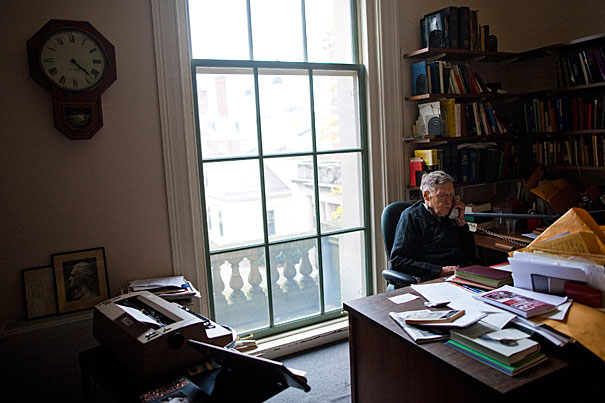
Emeritus Professor Daniel Aaron, whose first scholarly paper appeared in 1935, continues to write. His latest book, published in 2007, was a memoir, “The Americanist.” He is now busy putting his journals in order. His first is from 1929.
Photos by Stephanie Mitchell/Harvard Staff Photographer
Scholars venerable
Harvard’s emeritus faculty operate, in many ways, as the University’s living memory
One of them corrected Harvard student John F. Kennedy’s literature papers. Another is the grandson of slaves and was a classmate of the teenaged Martin Luther King Jr. A third escaped Europe on the eve of World War II and rose to become a key aide to President Lyndon Johnson during the Vietnam War. A fourth helped to throw open the gates of all-male colleges to women.
Harvard has hundreds of older professors with intriguing personal stories like these. Officially, the men are each called emeritus and the women emerita, honorifics that originated with the Latin word for “skillful, but honorably retired.” In many ways these professors, many of them still active in their fields, are the keepers of Harvard’s living history. Their experiences illuminate most of the 20th century, their teaching guided generations of students, and their mentoring trained most current faculty members.
Many emeriti had early lives marked by family hardships, hideous wars, grand injustices, and Gump-like brushes with fame. Their diverse numbers include Norman Ramsey, a Nobel laureate in physics who as an Army officer helped to assemble the atom bomb dropped on Hiroshima; Ruth Hubbard, a groundbreaking biologist who escaped the Nazis as a teenager; Sacvan Bercovitch, whose earliest formative years were spent on an Israeli kibbutz; and Bernard Lown, a physician and inventor of the defibrillator, who founded an antiwar group that won the Nobel Peace Prize.
The sample stories that follow provide a window into the past and a glimpse of the ongoing influence of Harvard’s older professors:
Daniel Aaron
Victor S. Thomas Professor of English and American Literature Emeritus
Retired: 1983
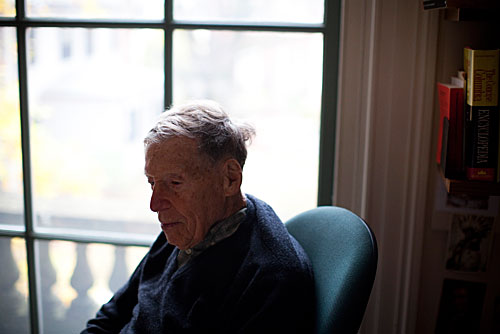
Daniel Aaron, who turned 98 in August, arrived at Harvard as a first-year graduate student in 1933. He remembers Widener Library in the days when historian Samuel Eliot Morison — Class of 1908, and the last Harvard professor to ride a horse to work — would stride in wearing full riding regalia, slapping a leather crop on his high boots.
Morison’s grand and aggressive entrances were astonishing, Aaron said, but at the same time they perfectly embodied a Harvard that still clung to 19th century values, despite the social tumult of the Great Depression. “That [old] Harvard was still there. You could feel it and see it,” said Aaron, who went on to earn the University’s first degree in the history of American civilization. “Coming from the outside, it was like coming to a foreign country.”
That shadow country included Harvard’s undergraduates, generally the products of tony Eastern schools. Their exclusive, self-created world was mostly closed to someone like Aaron, whose public education came in Los Angeles, Chicago, and Ann Arbor, Mich. He said, “I could never think of myself as a Harvard man.”
But by the end of the 1930s, an influx of bright undergraduates from small-town America brought their native vitality with them to Harvard Yard. The change soon overtook the more “elaborate education” of their private school peers, said Aaron, and helped to transform Harvard into “a national university.”
He remembers his favorite students fondly, and has recorded their stories (and often their obituaries) in hardbound journals kept since 1929. Aaron, who still walks to his Barker Center office every day, is currently working on a digest of what he calls his “commonplace books,” which are crammed with paper, pictures, clippings, and autobiographical notations.
He read a scrapbook insert aloud, an obituary of Emile de Antonio ’40, who died in 1989. The Scranton, Pa., undergraduate went on to make prize-winning documentary films on Cold War America, including “Rush to Judgment” (1967), about the assassination of his own classmate, President Kennedy. “That,” said Aaron, “was the kind of person you might find in your class.”
Aaron published his first scholarly paper in 1935, on “Melville and the Missionaries,” and then spent fruitful decades on studies of the American Renaissance, the Civil War, American progressive writers, and the literary actors in what he once called America’s “cheerful and welcoming democratic collective.” He continues to work in his field.
Along the way, Aaron’s circle of contemporaries included the glitterati of literature: Perry Miller, F.O. Matthiessen, Henry Nash Smith, John Dos Passos, and Robert Frost. Edmund Wilson, a close friend and mentor of 30 years, “was my model as a writer, as a journalist, and as a critic,” he said. Aaron also corrected papers by future President Kennedy, and remembers writer Norman Mailer as a teenager in Dunster House. Of this “Who’s Who” collection of friends and acquaintances, Aaron said simply: “You met people.”
He also taught at Smith College for decades, before returning to Harvard in 1971, amid the uproar of collegiate anti-war protest and national cultural upheaval. “I played the bemused onlooker,” he wrote in his 2007 memoir, “The Americanist.”
Today’s Harvard is far removed from the institution Aaron first saw nearly 80 years ago. The changes never seemed sudden, he said, but “you don’t keep adjusting easily. You don’t go along with it. You lag behind.” For Aaron, electronic communications is one area of lagging. He doesn’t write email, or own a computer, or have a television. He types on a pivoting-font IBM Selectric, a model introduced in 1961.
Despite his decades at Harvard, Aaron sometimes still feels like an interloper from the American West, not what he calls “an authentic local.” But his feelings for Harvard are nonetheless strong, unchangeable, and deep. “I feel very defensive and very loyal to Harvard,” said Aaron, who lives near Cambridge Common. “And, of course, there is no other place; I’ve lived here for so long now.”
Francis Bator
Lucius N. Littauer Professor of Political Economy Emeritus
Retired: 1996
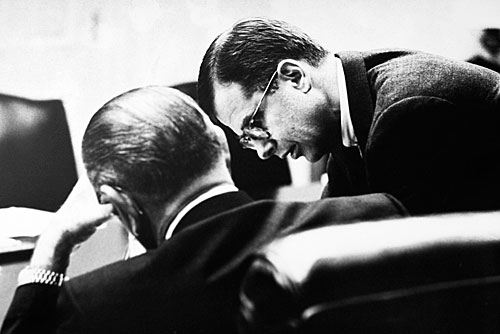
In 1929, 4-year-old Francis Bator, the son of a prominent Budapest lawyer, took his first ski run. (He wouldn’t quit the slopes until 70 years later.) In 1939, Bator and his family departed for what he thought would be an August vacation in the United States, but World War II barred their way home.
By 1944, he had graduated from the Groton School, had put in an accelerated freshman year at the Massachusetts Institute of Technology (MIT), and had become an 18-year-old private in the U.S. Army. (He eventually mustered out as a first lieutenant.)
Twenty years later, Bator was in the Oval Office as the new senior economist on the National Security Council staff, and served as the deputy national security adviser to President Johnson.
“The notion that Johnson was no good at foreign policy is nonsense,” Bator said. “He had a very big and tough mind, and ran his own show. There were no peers. But he thought that if he backed away in Vietnam — or told the country the truth that he was Americanizing the war — the social legislation to bring the country into the 20th century would be stillborn in the Congress.’’
By then, the 38-year-old Bator had earned a Ph.D. in economics from MIT, had taught there, and had helped to set up its Center for International Studies. He had worked briefly for the RAND Corp. and for the State Department, and had authored two still well known major articles on the pure theory of free market economics, as well as an influential book, “The Question of Government Spending.” It was one of seven books, said The New York Times in 1961, that most influenced Kennedy’s “approach to the presidency.” Bator recently argued in the Financial Times that the book’s thesis still applies. “Government spending, taxes, deficits, and debt are not good or bad as such,” he said. “They are policy tools, good or bad according to what outcomes in the real economy we want them to achieve.”
In the White House, according to Business Week, Bator became Johnson’s “key adviser” on world economic matters and European affairs. Writing about him as “Europe’s Assistant” later, The Economist magazine said that he had “a lot to do” with the “lucidity, consistency, and balance” in the administration’s successful handling of such issues as international monetary reform, tariff negotiations, keeping forces in Germany, adapting NATO, and keeping nuclear non-proliferation alive.
In the fall of 1967, Bator left the White House to join the inaugural faculty at Harvard’s new John F. Kennedy School of Government. “I was intrigued by the idea of working with a handful of extraordinary colleagues to create a new curriculum that reached across traditional disciplines like economics and law,” he said. One result was a new two-year master’s program in public policy, which he chaired.
Bator also leapt with two feet into University life. He joined a Harvard governance committee; co-wrote “Harvard and Money,” the pamphlet that urged the University onto a different investment path that swelled the endowment; and joined a committee on Harvard-community relations, which were roiled by Vietnam protests.
Coming to Harvard also allowed Bator to re-enter domestic macroeconomics, which he taught in the classroom with flair. A student once wrote, “Bator could teach economics to a stove!” It’s what he has continued to write about, having just begun a small book on what he thinks his grandchildren need to know. And it’s what he taught until, at age 70, he came to feel about teaching as he did about skiing: It was time to stop.
“I loved the teaching,” said Bator, who lives in Wellesley, “and missed it for a long time.”
Charles Vert Willie
Eliot Professor Emeritus, Harvard Graduate School of Education
Retired: 1999
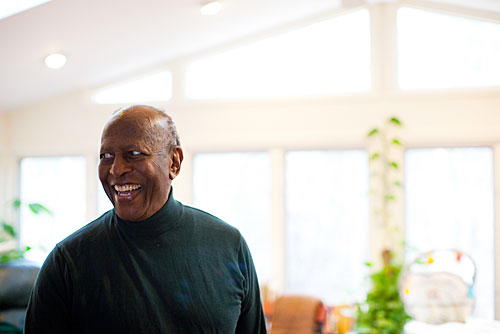
His grandfathers were slaves. He grew up in the Jim Crow South in Texas and Georgia. Prior to the Civil Rights era, in 1944, he entered Morehouse College along with Martin Luther King Jr., who became his good friend.
Charles Vert Willie, who turned 83 this year, lives in Concord, Mass., with his wife, Mary Sue. Their house is amid woodlands once surveyed by Henry David Thoreau, and not far from the North Bridge, where the first battle of the American Revolution was fought.
Willie has fought more recent battles for racial equality and justice. As an applied sociologist, he helped the cause in his own way, collecting and interpreting racial, ethnic, gender, and socioeconomic data. He wrote about race and justice through the lens of sociology, examining urban communities, family life, public health, grassroots social movements, and desegregation in education.
His expertise on America’s racial inequalities sometimes meant stepping outside the traditional bounds of the academy — into the courts and communities, as he did to promote integrated education. In 1974, Willie was one of four court-appointed masters who helped develop a plan to desegregate Boston’s public schools, a role he repeated in many other cities. “I still see myself as a sociologist,” he said, “but I steer close to current issues.”
Steering close included drawing his students out of the classroom and onto the streets, where they conducted interviews. “I’ve made a point,” said Willie, “of getting my students acquainted with what is actually going on.”
His active teaching career spanned 1950 to 1999, first at Syracuse University, where in 1967 he became the first black professor to chair the sociology department, and where he was vice president of student affairs during the anti-war turmoil. He came to Harvard in 1974 as the first African-American tenured professor at the Graduate School of Education (HGSE).
Willie took away two main lessons from his long view of America’s racial past: Be a person for others — a mentor — and always promote love and justice as the foundation of community life.
His first mentors were his parents, who raised a family of five during the Great Depression in racially divided Dallas. Willie entered Morehouse at age 16 (King was 15), and found mentors whose messages went beyond good scholarship. They urged him to seek out social injustice and correct it. In his own career, he often invited students home to dinner — and even to help on many of his 32 books.
Willie also served as “a person for others” in 1974. As one of the top lay officers of the Episcopal Church, he delivered the sermon that year at an irregular service in Philadelphia as part of the first U.S. ordination of female priests. Ms. magazine later named Willie one of its “male heroes.”
The point is to honor and seek diversity, said Willie, who often talked about the Biblical lesson of Noah and his expansive, two-by-two ark. “You need diversity,” he said, “if you want life to continue.”
Patricia Albjerg Graham
Charles Warren Research Professor of the History of American Education Emerita
Retired: 2001
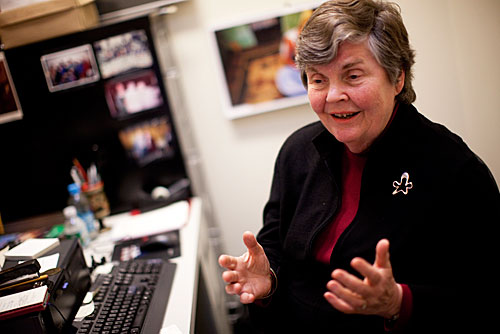
As a teenager, Patricia Graham didn’t have much patience with the public schools in her native West Lafayette, Ind., which she found dull. Education is what happened at home, she thought. Her parents, both Ph.D.s, talked about books, knew culture, and read the Sunday New York Times. Impatient, Graham — a future HGSE dean — dropped out of high school at age 16. “I had enough credits,” she said. “I figured they owed me a diploma.”
But education doesn’t happen at home for everyone, especially for American children in the bottom third of the education demographic. Armed in 1955 with a bachelor’s degree in English and history from her hometown university, Purdue, Graham found out soon enough about that bottom third.
With her husband in the Navy, she took a teaching job at Deep Creek High School in rural Virginia. The annual salary was $2,250, but the education was priceless. At Deep Creek the boys struggled with their studies. Three of the girls in her ninth-grade classroom became pregnant. And Deep Creek, a segregated white high school, had a 75 percent dropout rate.
But before she left, Graham learned how to teach reading, speech, and drama, and guided her 12th-grade theater group to a second-place state title for the best high school play.
She became director of Barnard College’s Education Program (1965-1974), where she learned about the underserved New York City schools.
Her grounding on the bottom third helped to inspire her “to try to bring the best quality of education to people who have been excluded from it.”
The excluded, of course, were more than just poor whites and underprivileged minorities. They were women too.
In 1969, Graham, who had earned a Ph.D. in the history of education from Columbia University, took a year off to help Princeton University adapt to its new co-ed student body, the same step other Ivy League schools were taking. Her breakthrough observations, “Women in Academe,” appeared in Science magazine in 1970. In the article, she said that universities opening their doors “needed tenured women faculty who had a streak of feminism — concern for their gender.”
In 1974 she joined the HGSE faculty. She became vice president of Radcliffe College, and then dean of what became the Radcliffe Institute. By 1977, Graham was one of four Radcliffe affiliates working with four Harvard men on an agreement to blend the colleges under one academic umbrella.
After spending two years working at the National Institute of Education, where she supervised a $100 million research budget, Graham returned to Harvard. By 1982, she was the HGSE dean — the first woman at Harvard to be named dean of a whole faculty.
“I think it was those kids,” said Graham of her success, meaning the kids in Deep Creek and New York. “And women — like my mother — who had been excluded from jobs commensurate with their training.”
The obligation of higher education, said Graham, is to identify the talented and to invite in those who have been excluded.
Her post-retirement work follows the same theme. Graham is on the boards of the Carnegie Foundation for the Advancement of Teaching and the Central European University in Budapest, an institution formed after the fall of the Soviet Union. Its mission is to revive subjects that were neglected behind the Iron Curtain, including law, history, and business. She is also on the board at Apache Corp., an oil and gas exploration and development company that has what she called “a major interest in educational philanthropy.” (One recent project was to open 200 one-room schools for girls in Egypt.)
Education’s big challenge is to work on that bottom third, said Graham — the forgotten, the excluded, and the neglected students with valuable skills. But to get there, she said, “we’ve got a lot of homework to do.”




